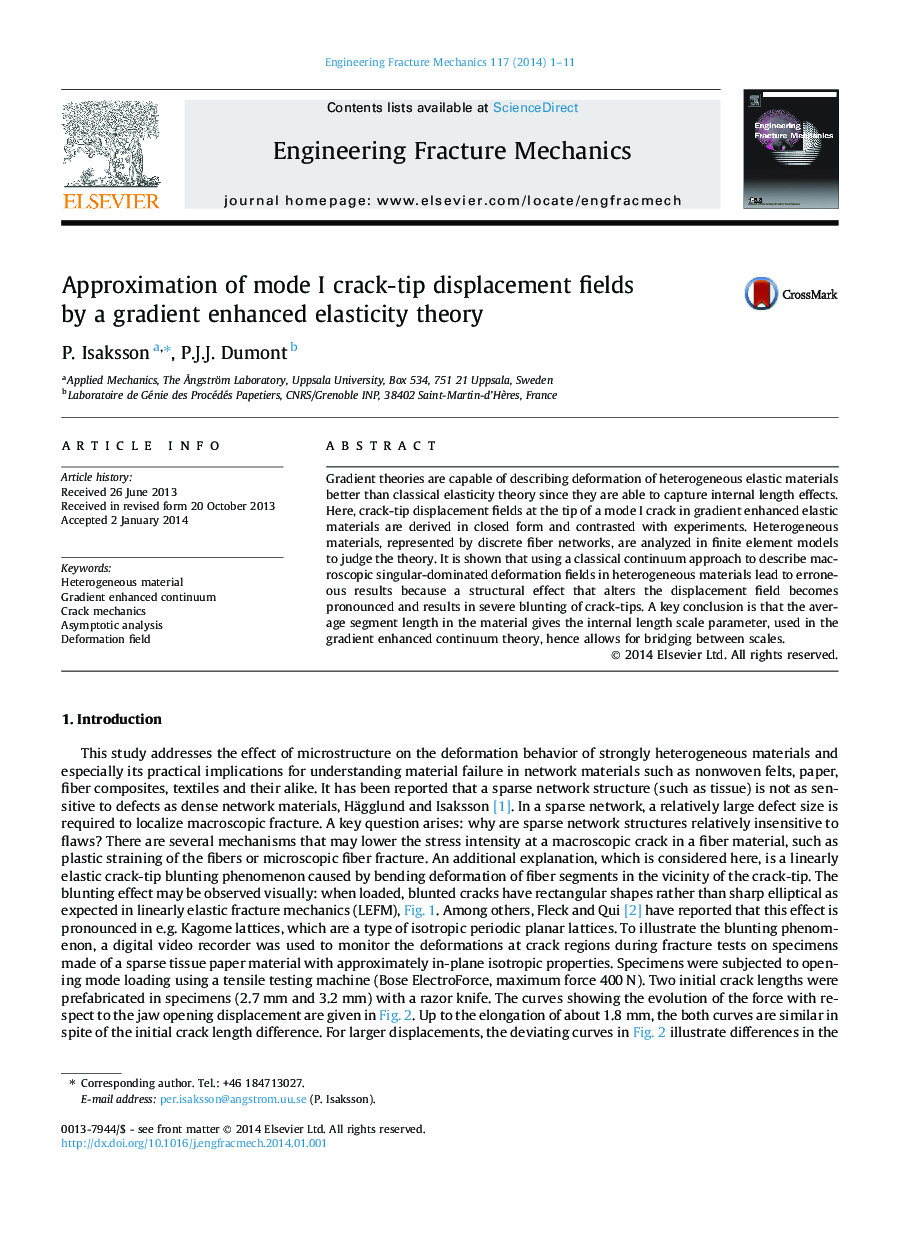| Article ID | Journal | Published Year | Pages | File Type |
|---|---|---|---|---|
| 766963 | Engineering Fracture Mechanics | 2014 | 11 Pages |
•Mode I deformation fields in gradient enhanced materials are derived in closed form.•The theory resembles experimental results in fracture experiments on a fiber material.•A structural effect results in crack tip blunting in heterogeneous materials such as fiber networks.•The average segment length gives the internal length scale parameter, hence allow for bridging between scales.
Gradient theories are capable of describing deformation of heterogeneous elastic materials better than classical elasticity theory since they are able to capture internal length effects. Here, crack-tip displacement fields at the tip of a mode I crack in gradient enhanced elastic materials are derived in closed form and contrasted with experiments. Heterogeneous materials, represented by discrete fiber networks, are analyzed in finite element models to judge the theory. It is shown that using a classical continuum approach to describe macroscopic singular-dominated deformation fields in heterogeneous materials lead to erroneous results because a structural effect that alters the displacement field becomes pronounced and results in severe blunting of crack-tips. A key conclusion is that the average segment length in the material gives the internal length scale parameter, used in the gradient enhanced continuum theory, hence allows for bridging between scales.
